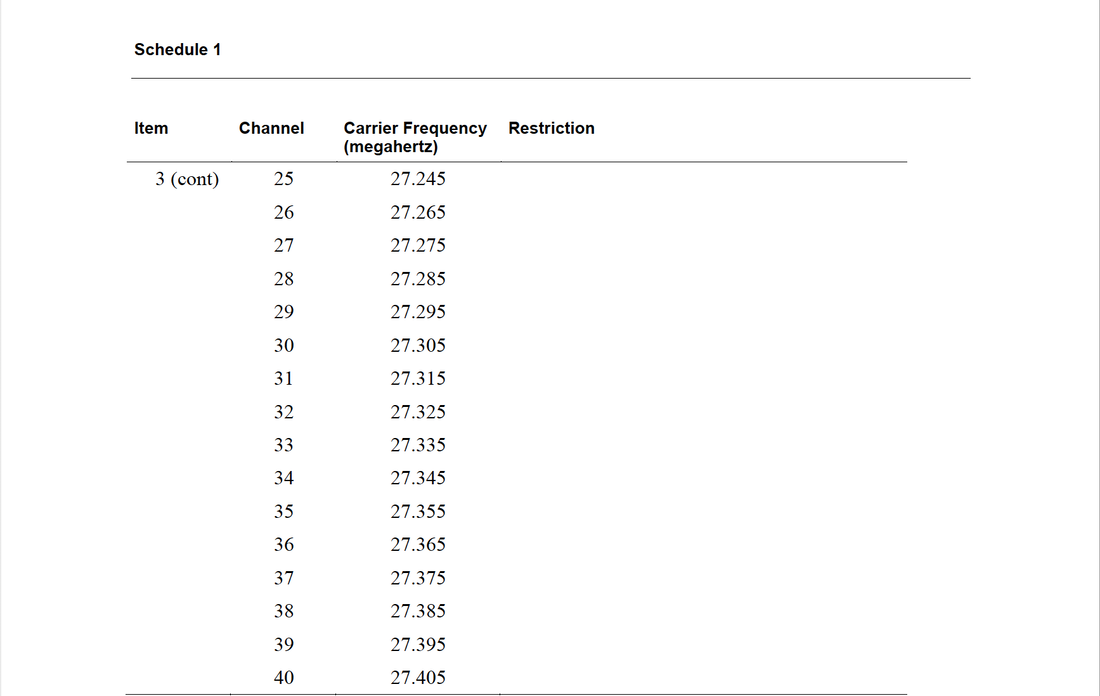CITIZENS BAND (CB) RADIO.
CB radio in Australia
The operation of CB radio in Australia is authorised under the Radiocommunications (Citizen Band Radio Stations) Class Licence 2002, which can be located on the Australian Communications Media Authority (ACMA) website.
I have also attached a copy below.......
I have also attached a copy below.......
| f2017c00476.pdf | |
| File Size: | 874 kb |
| File Type: | |
No licence is required in Australia to operate a CB radio.
Despite this, the CBRS class licence does impose a number of operating conditions. which include:
The operation of CB radio in Australia is also subject to the provisions of the Radiocommunications Act 1992.
Despite this, the CBRS class licence does impose a number of operating conditions. which include:
- compliance with mandatory standards
- operating frequencies
- proper conduct
- transmitter power levels
The operation of CB radio in Australia is also subject to the provisions of the Radiocommunications Act 1992.
The Citizen Band Radio Service (CBRS) operates in two distinct bands - the high frequency (HF) band, and the ultra high frequency (UHF) band.
Frequencies
Frequencies
- HF - 26.965 MHz to 27.405 MHz (inclusive)
- UHF - 476.4125 to 477.4125 MHz (inclusive)
On the HF band (11 metre band), AM and SSB can be used.
References.
1. ACMA, 2020, <https://www.acma.gov.au/licences/citizen-band-radio-stations-class-licence>
2. Radio Industries, 2020, <https://www.radioindustries.com.au/citizen-band-facts.html>

